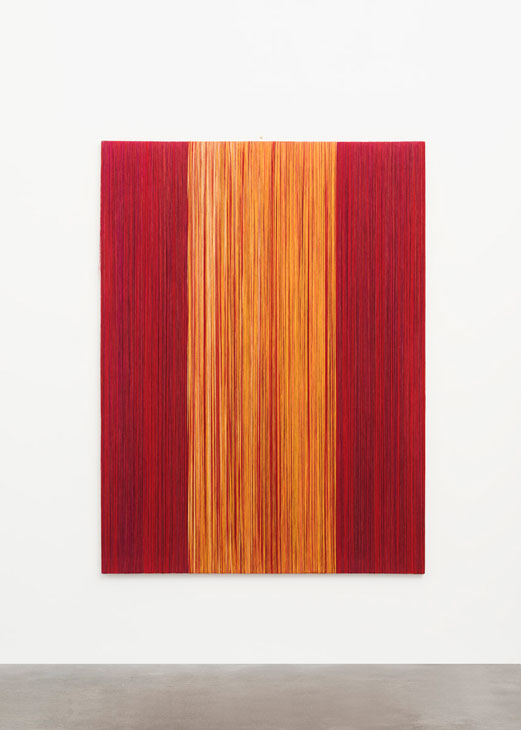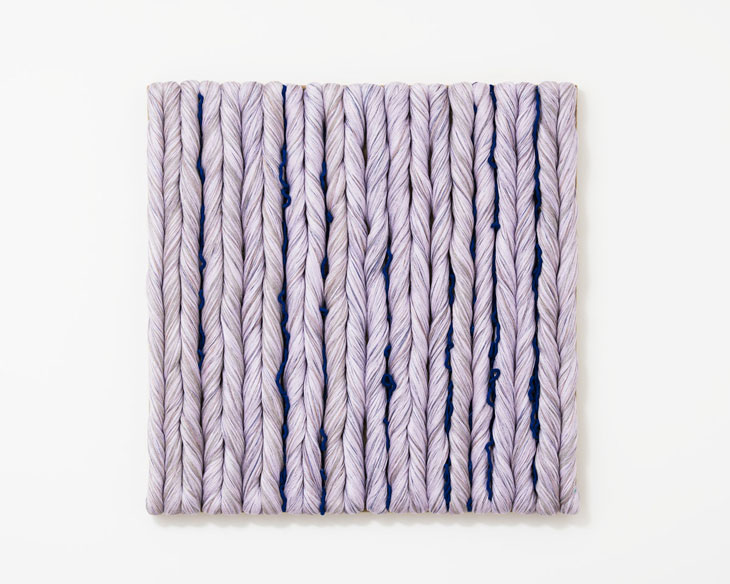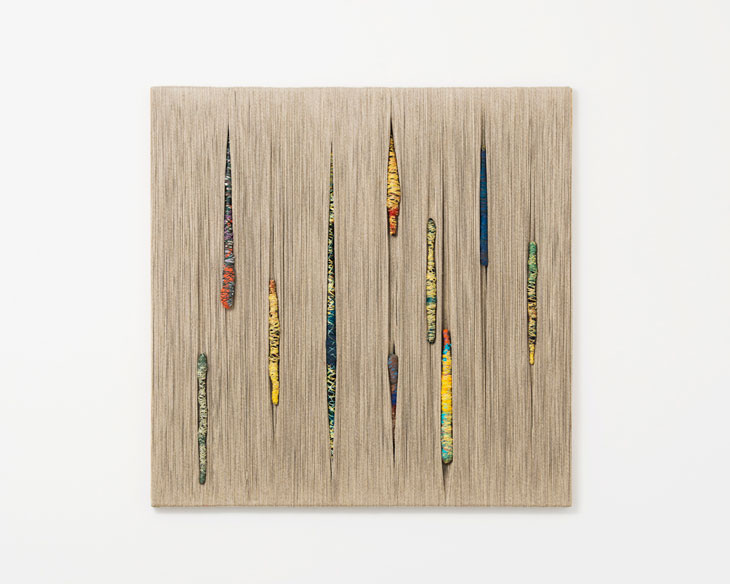As the multicoloured blaze of her monumental textile installation at this year’s Venice Biennale exhibition makes clear, Sheila Hicks, now 83, is at the height of her powers. The artist’s weavings were first exhibited in Argentina and Chile in the late 1950s, and at the Art Institute of Chicago in 1963. Numerous solo shows followed, and in 2010 a major retrospective toured the United States. A string of international success followed, with significant presentations at the São Paulo Biennial in 2012; at the Palais de Tokyo, Paris, in 2014; and at the 20th Biennale of Sydney in 2016. Her sumptuous installation, Mighty Mathilde and Her Consort (2016), featured prominently at Glasgow International last year. This autumn, ‘Free Threads: Sheila Hicks, 1957–2017’ opens at the Museo Amparo in Puebla, Mexico (3 November–28 February 2018), and next spring the Centre Pompidou hosts another retrospective, ‘Lignes de Vie / Life Lines’ (4 February–30 April 2018). It is as if the world, having woken up to the expressive potential of her chosen medium, is finally eager to weigh Hicks’s creative achievement.
Langue d’oiseau II (2016–17), Sheila Hicks. © Sheila Hicks. Courtesy of Alison Jacques Gallery, London

The artist’s work is currently on show at Alison Jacques Gallery in London (until 11 November). The display, her second with the gallery, covers the gamut of her work in textile. Hanging in the foyer as you enter is Langue d’oiseau II (2016–17). (Hicks has lived in Paris since 1964, and as many of her creations are titled in French as in English.) The work is a large abstract wall piece constructed from threads of linen woven into bands of red and orange. At first glance it seems an attractively decorative piece, but further scrutiny reveals how each thread is used as a single three-dimensional line of colour. Minute differences between them build into chromatic peaks and troughs; one’s eye moves constantly over the surface, unwilling to settle, like a restless bird. This is a very different language to that of paint. Once you realise this, it becomes clear that Hicks’s beautiful object is also a statement – an affirmation of thread’s expressive power and its legitimacy as an art material.
Hicks discovered Andean textiles a student at Yale University in the 1950s. As she explained in an interview with Frieze magazine in 2015: ‘I began teaching myself how to weave because I was interested in how the pre-Incas structured thought with threads, with lines.’ At the time, she was studying under Josef Albers, whose wife, Anni, had experienced a similar revelation about the power of the medium. Repeated visits to South America and early teaching posts in Chile cemented Hicks’s interest, and over the years she also pursued textile projects further afield. Her passion for fibres of all kinds is underlined in the current exhibition by the editioned lithograph Carnets de 1965 (Notebooks dated 1965) (2016). In this work, Hicks presents images of her own pieces facing two pages from her early notebooks – one showing an Egyptian bust with braids, the other a photograph of vividly coloured textiles for sale at a Peruvian market.
Lilas (2014), Sheila Hicks. © Sheila Hicks. Courtesy of Alison Jacques Gallery, London

These inspirations echo across the exhibition, in work that ranges from great suspended cascades of threads (I am at the Gate; 2017), to beautifully ordered groups of hanging braids, like bell-ringers’ ropes (Chords of Accord; 2017), to giant, bundled parcels of recycled fabric (Grand Boules; 2009). Wall works such as Tornado Orange (2015) and Lilas (2014) create patterns from spirals of variously coloured threads. Wriggling lines of tightly twisted yarn push through the ranks, nagging, insistent, refusing to lie down.
At the other end of the scale are Hicks’s ‘minimes’ – small stitchings and weavings created on the artist’s travelling loom. These act like sketchbooks or notebook entries, capturing moods, passing views and elusive thoughts or experiences. As the cotton and silk minime No Way Out (2017) suggests, with its vagrant threads creeping their way across vertical fibres, where there is no warp, there can be no weft. We cannot escape our world; we can only work within it. As Wittgenstein once wrote, ‘the limits of my language are the limits of my world.’ Yet, even within this small (24 × 14 cm) work, the fluency, richness and depth of Hicks’s thinking in this medium is apparent.
‘Sheila Hicks: Stones of Peace’ is at Alison Jacques Gallery, London, until 11 November.
Les Espions (2017), Sheila Hicks. © Sheila Hicks. Courtesy of Alison Jacques Gallery, London




